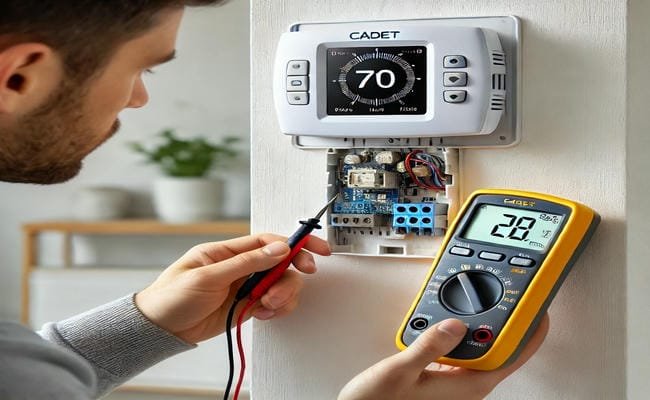
How To Tame Chicote In Minecraft
January 23, 2025
How To Trace The Chromebook Primitive Ward
January 23, 2025The Cadet T531 thermostat is commonly used to control electric baseboard heaters, providing efficient temperature management in residential and commercial settings. If you suspect your thermostat isn’t working properly, testing it can help diagnose issues related to heating performance. This guide will walk you through the step-by-step process to test the Cadet T531 thermostat safely and effectively.
Why Test the Cadet T531 Thermostat?
- Inconsistent Heating: If your room isn’t heating evenly, the thermostat might be faulty.
- No Power to Heater: Testing can determine if the thermostat is sending power to the heater.
- Energy Efficiency: Ensure your system operates efficiently, avoiding unnecessary energy waste.
- Prevent Costly Repairs: Identify minor issues before they become major electrical problems.
Tools You’ll Need
- Digital Multimeter (for checking voltage and continuity)
- Screwdriver (to remove the thermostat cover)
- Insulated Gloves (for safety when dealing with electrical components)
- Non-contact Voltage Tester (optional, for added safety)
Steps to Test the Cadet T531 Thermostat
1. Turn Off Power to the Thermostat
- Go to your circuit breaker panel and switch off the breaker controlling the thermostat.
- Use a non-contact voltage tester to confirm that there’s no power running to the unit.
- This step is crucial to prevent electrical shock during testing.
2. Remove the Thermostat Cover
- Use a screwdriver to unscrew the front cover of the Cadet T531 thermostat.
- Carefully detach the cover to expose the internal wiring and terminals.
- Keep the screws in a safe place for reassembly later.
3. Inspect for Visible Issues
- Check for loose wires, burn marks, or corrosion on the terminals.
- Ensure all wires are securely connected to their respective terminals.
4. Set Up the Multimeter
- Set your multimeter to the AC voltage setting if checking for live power.
- If you’re testing continuity (to see if the thermostat completes a circuit), set the multimeter to continuity mode (usually represented by a soundwave symbol).
5. Test for Voltage (Power Check)
- Turn the power back on at the breaker.
- Place the multimeter probes on the line terminals (incoming power supply).
- A properly functioning thermostat should show around 120V or 240V, depending on your system.
- Test Load Terminals:
- Place the probes on the load terminals (leading to the heater).
- Adjust the thermostat dial to the highest setting.
- If the thermostat is working, you should see voltage appear as the thermostat engages.
6. Test for Continuity (Thermostat Functionality Check)
- Turn off the power again at the breaker.
- Remove the wires from the thermostat terminals for accurate continuity testing.
- Place one probe on each terminal:
- When the thermostat is set to “on” (heat mode), you should hear a beep (continuity detected).
- When set to “off,” there should be no continuity (no beep).
Tips for Accurate Testing
- Label Wires: Use masking tape to label wires before disconnecting them, ensuring easy reassembly.
- Test at Different Settings: Adjust the temperature dial while testing to see if the thermostat responds.
- Compare Voltage: Ensure voltage readings are consistent with your heater’s specifications.
Troubleshooting Common Issues
- No Power Detected?
- Check the breaker or fuse box.
- Inspect for damaged wiring between the breaker and thermostat.
- Voltage In, No Voltage Out?
- The thermostat may be faulty and require replacement.
- Intermittent Operation?
- Could be due to loose connections—tighten all terminal screws securely.
When to Replace the Thermostat
If your tests show no continuity when the thermostat is engaged, or if it doesn’t send power to the heater despite having incoming voltage, it’s time to replace the Cadet T531.
Also Read: How To Tame Chicote In Minecraft
Conclusion
Testing your Cadet T531 thermostat is a straightforward process that helps diagnose heating issues efficiently. By following these safety measures and testing steps, you can determine whether the thermostat is functioning properly or needs replacement, saving you time and potential repair costs.




